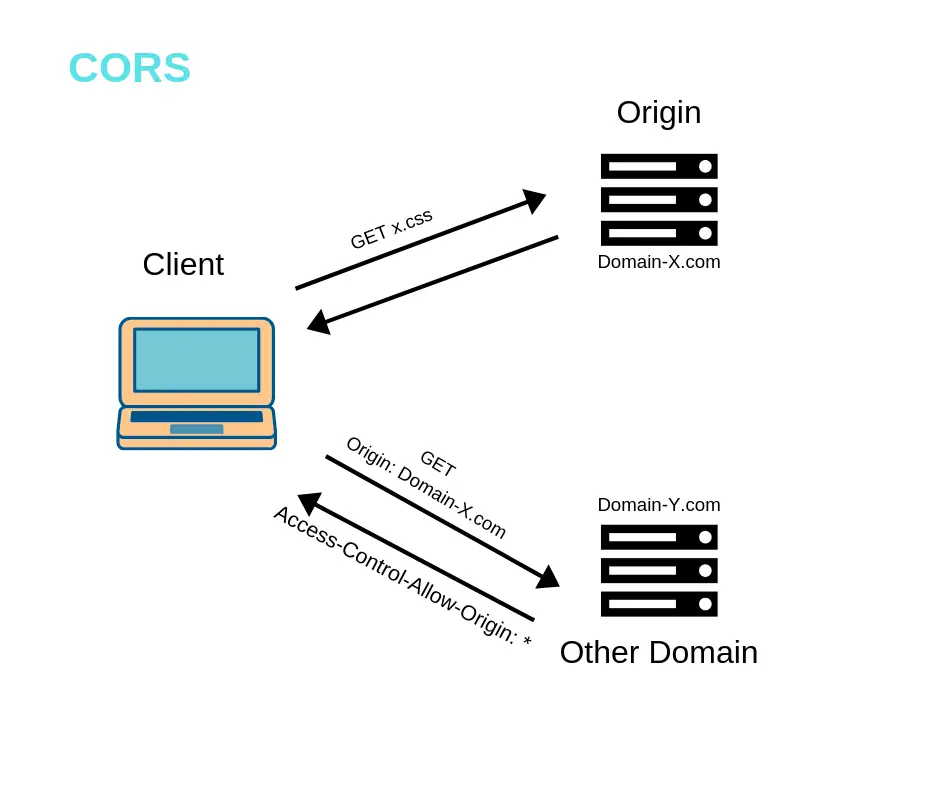Inside this article we will see the concept i.e How To Enable CORS for Multiple Domains in PHP. Article contains the classified information i.e Work for Access-Control-Allow-Origin with Multiple Origin Domains.
CORS is an important security feature as it helps to prevent malicious attacks such as cross-site scripting (XSS) and cross-site request forgery (CSRF). However, it can also cause issues if not configured properly, such as allowing unintended access to sensitive data or resources.
Read More: How To Show and Hide Password Field Text Using jQuery
Let’s get started.
What is Cross-Origin Resource Sharing (CORS)?
CORS stands for Cross-Origin Resource Sharing, which is a mechanism that allows web browsers to make cross-domain requests.
When a web application running on one domain (origin) tries to access resources (such as images, scripts, or data) on another domain, the browser may block the request due to the same-origin policy. This policy restricts web pages from making requests to a different domain than the one that served the web page.

CORS provides a way for servers to tell the browser whether or not to allow cross-origin requests. This is done through HTTP headers that specify which origins are allowed to make requests and what types of requests are permitted. By using CORS headers, a server can grant access to its resources to selected domains or all domains.
CORS is an important security feature as it helps to prevent malicious attacks such as cross-site scripting (XSS) and cross-site request forgery (CSRF). However, it can also cause issues if not configured properly, such as allowing unintended access to sensitive data or resources.
How Do we Enable CORS for Multiple Domains?
To enable CORS for multiple domains, you can configure your server to include the appropriate headers in the responses to allow cross-origin requests.
Read More: Best Practices for Writing High-Quality JavaScript Code
Here’s how you can do it:
- Determine which domains should be allowed to make cross-origin requests to your server. You can do this by specifying a list of allowed domains in the server configuration.
- Configure the server to send the
<strong>Access-Control-Allow-Origin</strong>header in the response to allow the specified domains to make cross-origin requests. You can set this header to either a specific domain, such as<strong>Access-Control-Allow-Origin: https://example.com</strong>, or to allow all domains by using a wildcard, such asAccess-Control-Allow-Origin: *. - If you need to allow credentials to be included in cross-origin requests, such as cookies or authentication tokens, you will also need to set the
Access-Control-Allow-Credentialsheader to true. - Additionally, you may need to set other headers such as
Access-Control-Allow-MethodsandAccess-Control-Allow-Headersto specify which methods and headers are allowed in cross-origin requests.
The specific configuration steps will depend on the server software you are using. Many popular web servers, such as Apache and Nginx, have modules or plugins that can be used to enable CORS. Alternatively, you can implement a middleware or a proxy server to handle CORS.
$allowedOrigins = [
'https://example.com',
'https://development.example.com' ,
'https://production.example.com' ,
];
if(in_array($_SERVER['HTTP_ORIGIN'], $allowedOrigins))
{
$http_origin = $_SERVER['HTTP_ORIGIN'];
} else {
$http_origin = "https://example.com";
}
header("Access-Control-Allow-Origin: $http_origin");
It’s important to be careful when enabling CORS for multiple domains, as it can increase the surface area for potential attacks. Be sure to only allow domains that are necessary and validate input to prevent malicious requests.
Use the <strong>$_SERVER['HTTP_ORIGIN']</strong> variable to verify which domain the request comes from and then conditionally set the <strong>Access-Control-Allow-Origin</strong>
Read More: How To Create Your Own Hilarious ChatGPT Bot [No Coding]
We hope this article helped you to learn How To Enable CORS for Multiple Domains in PHP Tutorial in a very detailed way.
If you liked this article, then please subscribe to our YouTube Channel for PHP & it’s framework, WordPress, Node Js video tutorials. You can also find us on Twitter and Facebook.
